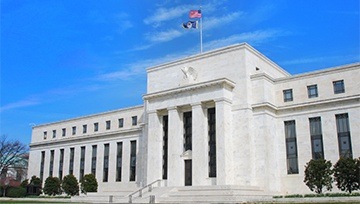Talking Points:
- Most Central Banks remain dovish as downside risk continues but Norges Bank has become an outlier by hiking rates
- Trade war disruption could come to an end at G-20 summit, further losses in FX and equity markets can be expected if no deal is reached
- Fed and ECB signal rate cuts are around the corner if economic conditions do not improve, European banks could see negative rates in place for longer
- Canada remains resilient as jobs and inflation stay strong
Central Bank activity was at its peak last week with most outcomes in line with expectations where Norges Bank became the outlier amongst a sea of dovish policy makers. Norway’s Central Bank rose its base interest rate for a third time in 12 months from 1.00% to 1.25%, and in its remarks hinted that future hikes can be expected throughout the second half of 2019 as the Scandinavian country enjoys robust growth. Policy makers have now increased the rate by 75 basis points since last August, and it is becoming an increasing possibility that we could finish the year with two further hikes and the rate at 1.75% as Norway’s core inflation remains above the 2% target at 2.25%. But being a petroleum-based economy with a strong reliance on European demand, softening oil prices and a general slowdown in demand could see the Norges Bank remaining cautious of further hikes throughout the rest of the year.
On the other side of the spectrum we had the Reserve Bank of Australia who at the beginning of June cut rates by 25 basis points to 1.25%, its first rate change since August 2016 when it also cut rates by 25 basis points. Their statement read “the outlook for the global economy remains reasonable, although the downside risks stemming from the trade disputes have increased” supporting that factors that affect China have a knock-on effect on Australia’s economy as China remains as one of the biggest importers of Australia’s commodities, which include coal and iron ore.
CHART OF THE DAY: INTERST RATE DECISIONS IN JUNE

But many central banks decided to leave rates unchanged in the latest round of monetary policy decisions as central bankers wait out to see if economic conditions improve. Recent developments in Sino-American trade wars could see a trade deal being confirmed at the G-20 summit in Osaka later on this week as both the US and Chinese presidents seemed to be open to dialogue in order to move forward. But knowing Donald Trump’s history with giving false hope no one will be holding their breath in hopes for a fruitful deal to be achieved. We can expect to see equity and FX markets taking a hit if this round of talks crumbles like the previous ones have, with a push in safe haven assets like the Japanese Yen, gold and to some extent the US Dollar. Central Banks will have more pressure to turn further dovish if no trade deal is reached this week as market participants will be anticipating further economic disruption which will continue to drag on growth prospects.
Easing Monetary Policy is Likely
Already considering future rate cuts are the US Federal Reserve and the European Central Bank, both of whom signalled last week that they are prepared to induce monetary stimulus if economic conditions worsen. It is surprising to see such a change in forward-guidance from the Fed, who twelve months ago was signalling up to three rate hikes in 2019 and has now done a complete U-turn in their growth estimates and investors expect a possible two or three rate cuts by the end of the year. Some believe that Mr. Trump may have something to do with this as he has been very critical about the Fed’s decision to hike rates last December and keep them unchanged for the first half of 2019. The US President has threatened Mr Powell with the removal of power in many occasions, but the Fed Chairman has been resilient and defied Trump’s threats, pointing out that job growth is still strong, and it wasn’t an appropriate time to cut rates just yet. But given how equity markets reacted after Fed Chairman Jerome Powell turned dovish and admitted that monetary easing could unfold in the following months, we can see that investors are worried about stagnant growth.
And Europe is in a worse shape than the US. Already with negative interest rates in place and a continued fall in inflation below the 2% target, the ECB has had no choice but to explore possible ways to keep interest rates below 0 whilst easing the pressure it causes in commercial banks’ liquidity ratios. Germany, which has for long been the Eurozone’s strongest economy and main driver of growth, is facing tougher conditions, led partly by the effect that trade wars are having on its export-led economy. Manufacturing sentiment has been below the 50 mark for some time indicating that industry is contracting whilst unemployment rose in the month of May for the first time in 5 years.
Close behind is the Bank of Japan, which has left rates unchanged at -0.1% since February 2016. Similar to the ECB and the Fed, Governor Haruhiko Kuroda left rates unchanged but signalled readiness to act as appropriate if economic conditions do not improve. Japan has seen weakness in its exports in 2019 on the back of the trade wars but the Central Bank still expects to see modest growth throughout the year. Despite aggressive monetary stimulus with negative rates and large asset buybacks in the last six years, Japan’s inflation remains well below the 2% target.
Not all data is weak
In Canada, latest economic data showed that the country is keeping strong and inflation is on the upswing. This eases off the pressure on the Canadian Central Bank to follow suit with the Fed, and we might see for the first time in a long time that Canadian and US interest rates converge, not because the BoC increases rates but because the Fed is likely to decrease them. If this happens we can expect the loonie to strengthen against the greenback, possibly reaching levels of 1.2840 last seen in October 2018.
The question now is whether Central Banks are able to stop the inevitable deflation that will come if trade disruption continues much longer, and given how markets have reacted in the previous weeks to Central Bank policies it seems likely that the only person who is able to stop this ongoing economic concern is Donald Trump himself.
Recommended Reading
Eurozone Debt Crisis: How to Trade Future Disasters – Martin Essex, MSTA, Analyst and Editor
KEY TRADING RESOURCES:
- Just getting started? See our beginners’ guide for FX traders
- Having trouble with your strategy? Here’s the #1 mistake that traders make
- See our Q3 forecasts to learn what will drive FX the through the quarter.
--- Written by Daniela Sabin Hathorn, Junior Analyst
To contact Daniela, email her at Daniela.Sabin@ig.com
Follow Daniela on Twitter @HathornSabin






